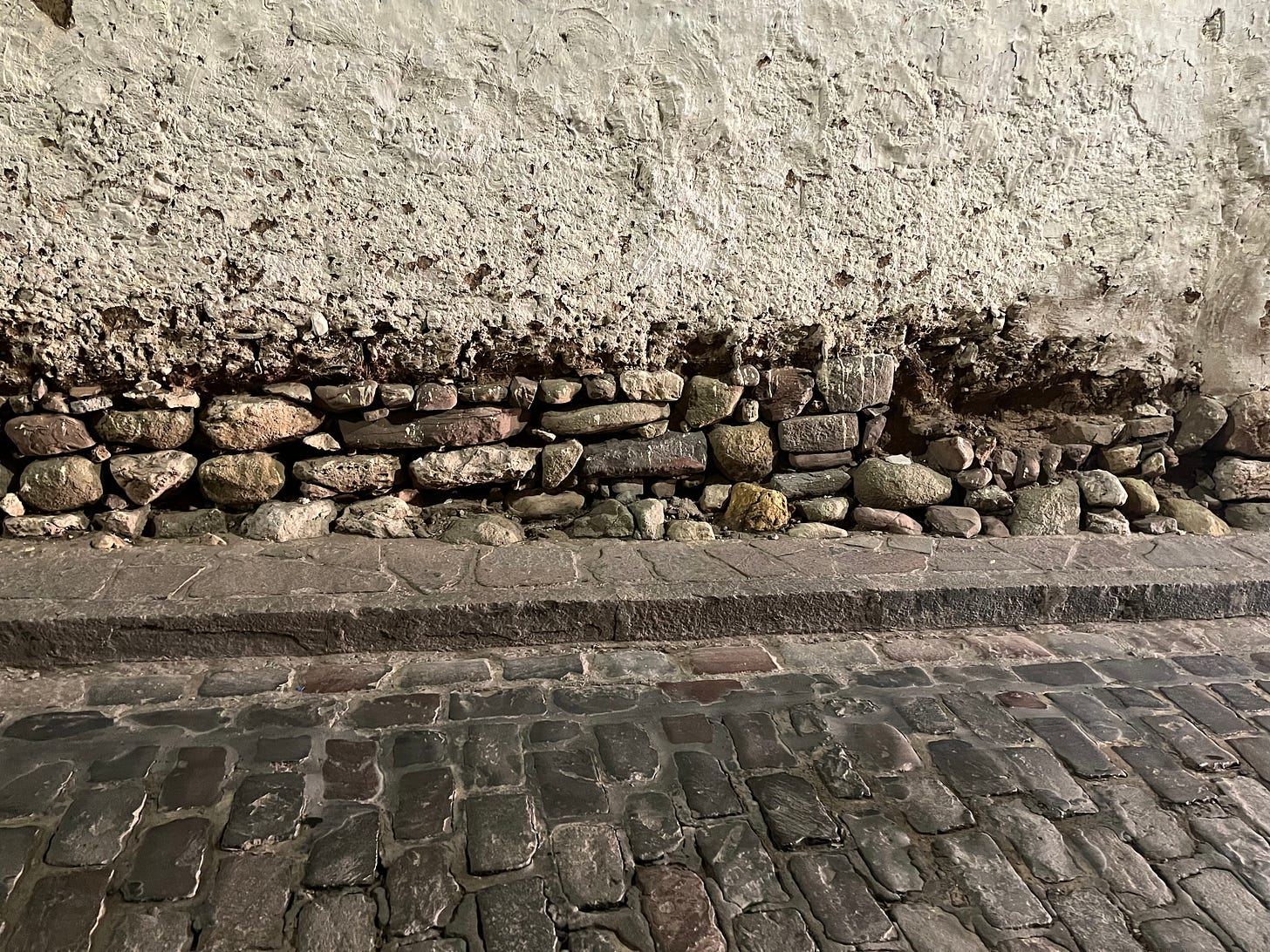“Papa, every stone is talking…. Papa, it seems as if they’re walking… Each stone is different. They’re not chiseled. They’re moving”
Reading the first chapters of Deep Rivers, while sitting at a plaza terrace in Cusco, immersed my experiencing of a very enlivened city, layered in lore. Author José María Arguedas was raised with Quechua and Spanish languages, holding a hybridity in culture. The concepts alluded to in literary fiction construct a contrasting conception of Cusco.
Cusco — “I feared Cusco. The vistage of Christ, the voice of the big bell… nowhere else must human beings suffer so much as here.” p.20
Here — where the strong hold of Catholicism guides the public’s energy and funds into symbolic festivals such as Corpus Cristi, where the intended overwhelm is experienced in facades and archbishops sermon.
In some regards, Cusco was a place where to “find eternal happiness” — my understanding involves aspects of salvation (?). In another relevance, Cusco is described as a “hostile town that lived in anger, infecting others with it” (p.27). Such may be the contradiction of an institutional faith seeking salvation apart from the animist honoring of land itself. This question of pride vs humility surfaced, noticing how characters were postured with forceful quantities (the old man’s “metallic voice”) or diminished and deprecating features (the pongo, clothed in rags - “one could sense the invisible weight that oppressed his breathing and the effort that he was making just to appear to be alive”p.19). The child-like depression Arguedas’s narrator experiences in Cusco pertains to the longing of familiar practices like those of the pueblos, given by his protectors, the Indian alcaldes, the sounds of gold bells and of Huaynos (traditional local songs) that he loves to share.
A distinction between world views is evident through his intereaction with the seemingly permanent forms of cobble/stone. I have since observed this walking around — some building, the first level is of unchizled rock, Inca Roca
“The lines of the wall frolicked in the sun; the stones had neither angles nor straight lines; each one was like a beast that moved in the sunlight, making me what to rejoice, to run shouting with joy, through fine fields. I would have done so, but the old man Leo on with his preaching, choosing his worlds, as if trying to overwhelm my father” (p.19)
The dead stone who fit tightly together greatly lack in the spontaneity and frolicking movements that sounded throughout the enlivened ones. The ones who still today hold the memories of a past intent. It is so telling of the narrators perceptive abilities as a child and as a person who beholds a culture permissioning joy in life. My experience of Cusco has not felt so dark and daunting as the visit in this story, thought I’m findings that looking and listening closer may unveil whispers and twinkles of pasts power to forage futures.





Now that some time has passed since you discovered Cusco, why do you think Arguedas preferred to talk about the city in those terms? The celebration of Corpus Christi is anything but depressive, it is an explosion of color, light and music. How is this image at the beginning related to what happens later in the novel?
Hi Emma,
I really appreciate your perspective, and absolutely understand what you mean! Had it not been for Deep Rivers, I don't know if I would have found or understood the significance of the stones and the different ways they are placed/shaped in the same way. I truly do believe that Argueda's narration, through Ernesto, brings the significance of the stones to life.